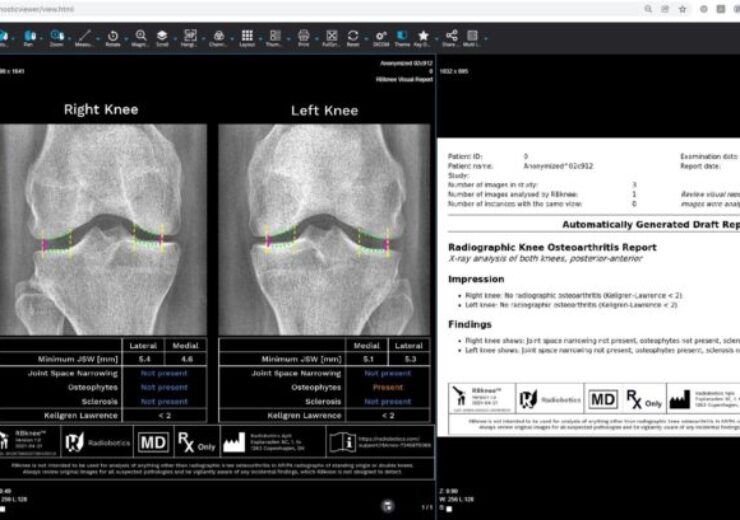The partnership adds AI to TeleRay’s pre-existing integrated medical image and patient information distribution platform

A Knee X-Ray with Radiobotics AI generated report. (Credit: TeleRay)
TeleRay and Danish health tech company Radiobotics have entered into a partnership under which the latter will offer its RBknee technology for users of the former’s telehealth platform for automatic analyses of knee x-rays to detect signs of osteoarthritis.
The RBknee technology, which is powered by artificial intelligence (AI), has been cleared by the US Food and Drug Administration (FDA). Based on a standing posterior-anterior (PA) radiograph, the clinical decision support tool can automatically identify osteoarthritis in the knees.
TeleRay, based in the US, is said to facilitate scheduling, sharing, face-to-face consultation and storage of medical information such as diagnostic imaging (DICOM) and others by and between specialists, doctors, and their patients.
Its partnership with the Danish health tech company adds AI to the latter’s pre-existing integrated medical image and patient information distribution platform.
TeleRay CEO Tim Kelley said: “We are always looking for innovative ways to serve our customers’ needs and we see an increasing demand for AI in Radiology. Our world-leading platform is now AI-enabled and having products like RBknee unlocked for our customers is central to the TeleRay vision.”
The existing customers of TeleRay can now access the RBknee technology on the former’s platform in a few clicks. The integration is important to creating a considerable impact for customers using RBknee, said TeleRay.
Radiobotics CEO Mads Jarner Brevadt said: “It’s a pleasure to work with the team at TeleRay, we see first hand the value they deliver for clinicians each day. Trusted partnerships like this are key for us at Radiobotics, to allow the technology which we have built to be in the hands of clinicians across the US.”
TeleRay claimed that it will bring Radiobotics AI to a larger market and reach those who usually will not be able to use such types of advanced applications for diagnosis.


